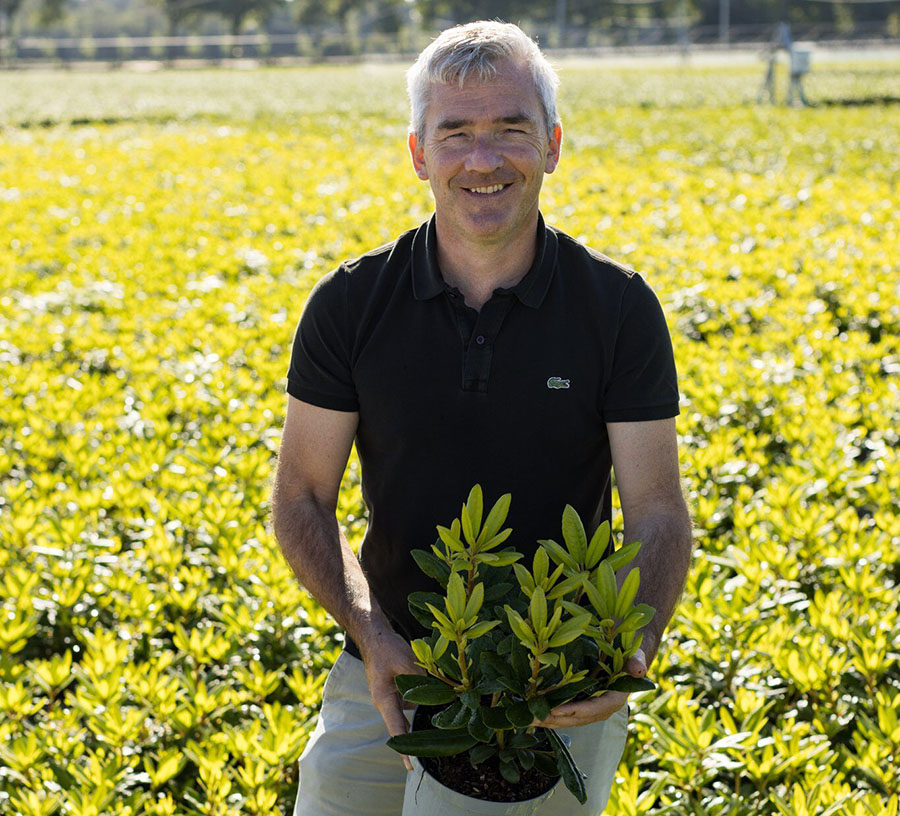- English

Tom Leybaert from Moerbeke (BE) started in the Azalea business, but now also produces Rhododendrons, Blueberries, Nandina and Agapanthus for a year-round supply. As the demand for peat-free crops grows, Leybaert is exploring the possibilities for his company: “We can’t stick our heads in the sand.” The nursery in Belgium is therefore fully engaged in the research phase. Leybaert is taking his time. “It could have a big economic impact if it goes wrong,” says Tom Leybaert. For the Belgian grower, it is a big step. For years, he has relied on high-quality peat as a “reliable” soil. “But,” says Leybaert, “with the growing demand from the trade, we need to make the switch quickly. That is not done easily. It takes a lot of research to get started with it. It can be done well once, but in the coming years we want to be able to provide continuity and stability in our product. The customer does not want to compromise on that.” For acid-loving crops – a large part of Leybaert’s production – a substrate with less peat remains a big challenge. “It’s about finding the right balance. Weather conditions also play a role. You can see that you have to respond differently to the needs. You have to create sufficient drainage, but at the same time ensure that you can retain moisture for drier periods.”
Opportunities
Leybaert has not yet tested complete peat-free substrates, but he has already successfully tested potting soils containing less peat. “We did fifty/fifty. It really didn’t disappoint. I’m convinced there are opportunities.” The cultivation periods at Leybaert are long, ranging from twelve to eighteen months of production time. “That makes it more difficult to switch. The ship is a bit clumsier.” That’s why Leybaert works with a supplier that he can rely on. “Substrate is a matter of trust,” says the grower. “Jiffy is a strong partner not only for us, but for many others as well. We have a lot of differences in various crop groups, such as Nandina and Azaleas. Jiffy deals with that very specifically. They try to offer customization for each product. It gives confidence to have a stable partner. So you don’t feel like you’re on your own. Not everything that is imposed on us is possible. But we have to be open to doing the research and seeing how far we can go to keep the environmental impact as low as possible.”